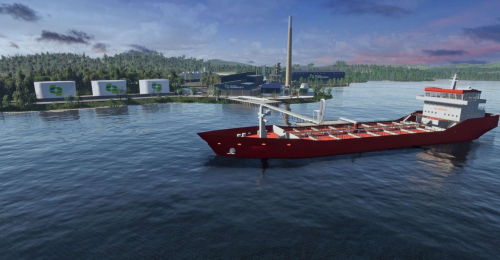The ABEL Energy Bell Bay Powerfuels Project is expected to produce 300,000 tonnes of green methanol per year. This amount is three times Australia’s current methanol consumption and is the shipping fuel equivalent of removing 540,000 tonnes of carbon dioxide from the atmosphere annually.

Mockup of Bell Bay
The project requires 240 MW of electrolysis to produce green hydrogen, and robust methanol synthesis and biomass gasification technologies. SunGas Renewables’ renewable syngas generation unit, the SunGas System 1000, is specifically designed to convert sustainably sourced wood fiber into renewable syngas. It is this renewable syngas that is used to make renewable biofuels for facilities such as Bell Bay.
Johnson Matthey has optimized the design of the methanol synthesis loop and combined it with its highly robust methanol synthesis catalyst. The process combines efficient technology with cutting edge catalysts and absorbents to maximize plant performance and reduce operating costs. The addition of green hydrogen increases methanol production and leads to increased carbon utilization efficiency.
SunGas Renewables worked closely with ABEL Energy and Johnson Matthey on design and optimization studies to fully integrate these leading technologies into the proposed facility. The Bell Bay Powerfuels Project is expected to commence in 2027.
The surge in demand for green methanol follows a host of new orders by most of the world’s major container shipping companies, including Danish multinational A.P. Moller – Maersk, for new ships to be fueled by this sustainable clean-burning fuel.
In July, SunGas Renewables announced the formation of Beaver Lake Renewable Energy, LLC, a new green methanol production facility in Central Louisiana which will exclusively produce 400,000 metric tons of green methanol per year to fuel Maersk’s fleet of methanol-powered container vessels.